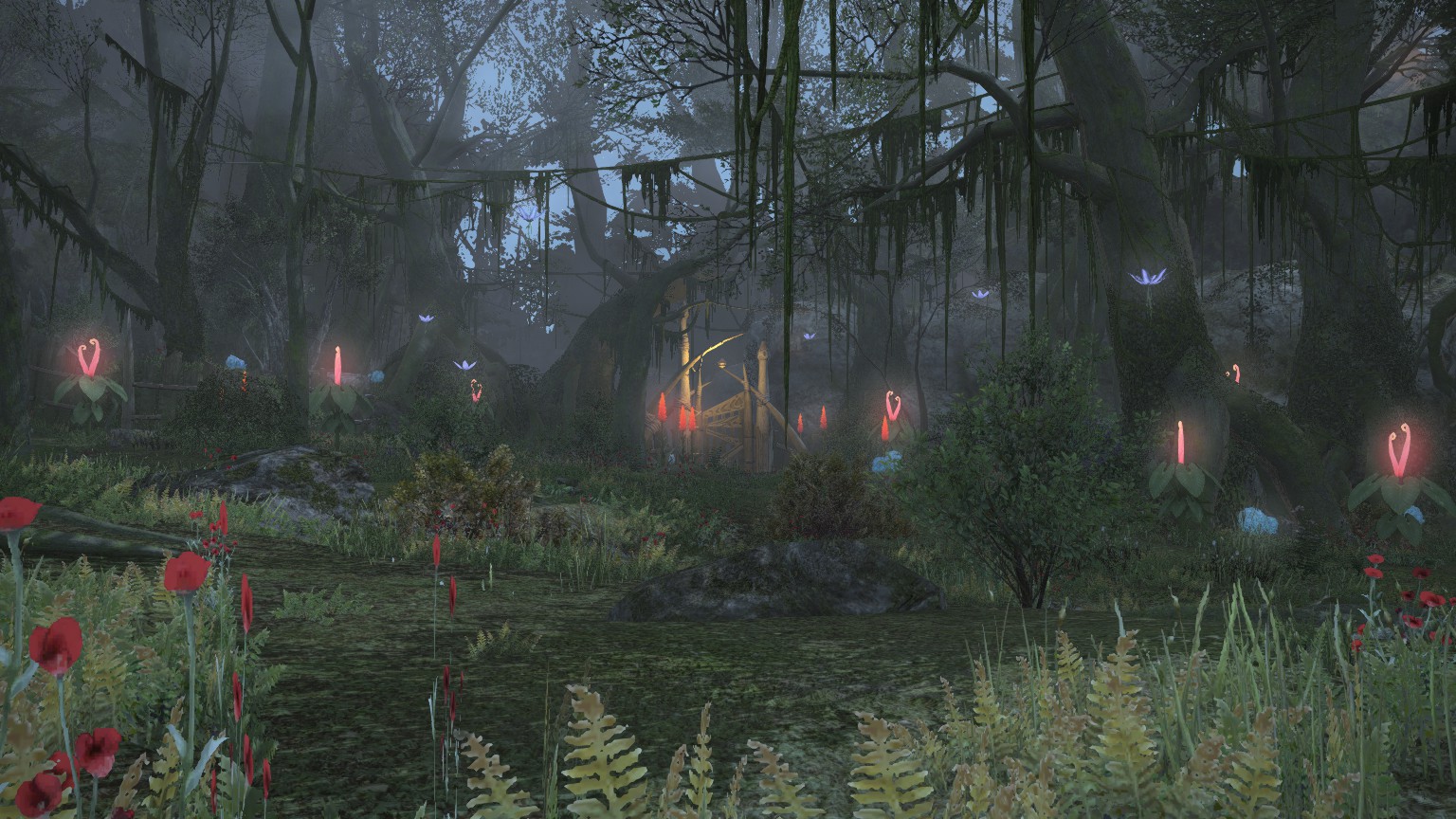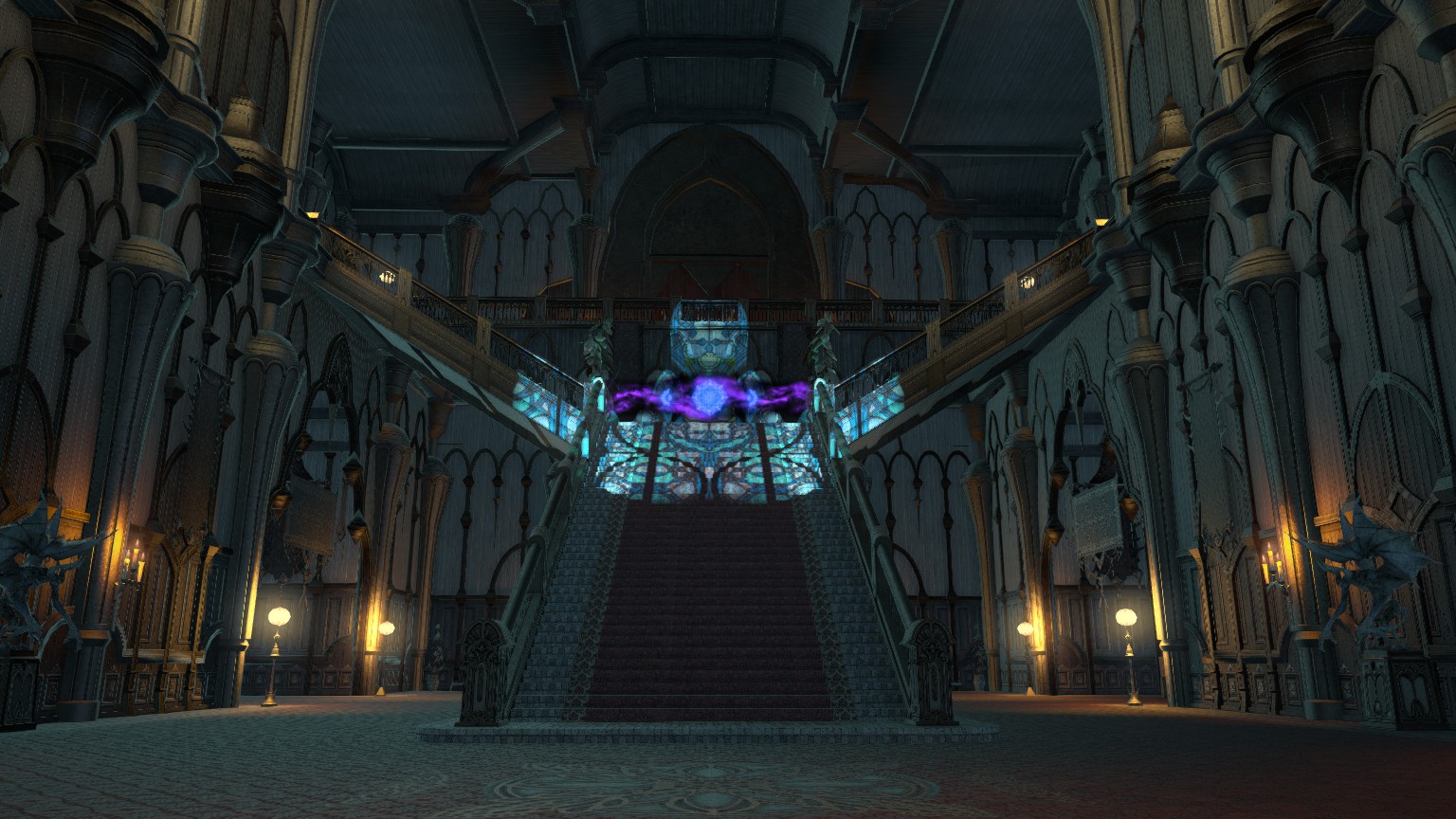From the archeological notebook of Archon Niniri Niri. Weaponry: The Flametongue: This sword found within Qarn is fairly standard in its structure, and appears to be a bastard sword, a blade that combines the balance and versatility of a longsword with the heft and length of a greatsword. The name flametongue is an expected one, as Azeyma herself is a deity of flame, and so this blade was likely used by one of her followers, likely a guardian of her temple. Etymology Notes: Flametongue is a common name for swords that boast a measure of flame magic across fantasy, from the wider Final Fantasy franchise to Dungeons & Dragons. The Boar's Bane: A common bardiche in structure, these axes were invented by Elezen tribes … [Read more...]
The Bestiary of the Sunken Temple of Qarn
Temple Bat Taxonomy: Cloudkin (Bat) Description: Bats reside within the dark places of the world, roosting in caves and other secluded locales. It is common knowledge that they are nocturnal creatures, but more dedicated research by the scholars of the realm has uncovered that they are capable of feats of extremely keen hearing and a technique called echolocation. Although most bats feed on insects and fruit, folklore has long held that some of them instead feed on blood. These specimens have obviously made their roost in ruins of the temple. Capabilities: Much to the chagrin of this author, it was discovered by the research team that these particular bats are fully capable of the blood-draining abilities ascribed to … [Read more...]
The Sunken Temple of Qarn – Belah’dia’s Grave
Excerpt from ‘The history of Thanalan, from Belah’dia to Ul’dah' by Archon Niniri Niri. One of the most impressive ruins of the early Sixth Astral Era, Qarn is any archeologist or historian's dream, and so this author felt extremely grateful to get the chance to poke around after it was cleared by adventurers. Qarn was a temple of Azeyma, goddess of the sun, built by Sultan Tatamefu II of Belah'dia that remained important to members of the Sultanate in the years since. The temple was undergoing a series of expansions underground, presided over by Sultan Lalafuto IV before internal strife and monetary issues forced their cancellation, followed soon after by the fall of Belah'dia. The ancient kingdom fell to a massive civil war waged … [Read more...]
The Bestiary of Brayflox’s Longstop
Gully Galago Taxonomy: Beastkin (Opo-opo) Description: Opo-opo are communal creatures that gather underneath a single dominant member, they are famed for their agility and dexterousness. These small beastkin are capable of thriving both on the ground and in the trees, and have become a common farming pest, picking fields clean when they grow hungry. Painted Colibri Taxonomy: Cloudkin (Colibri) Description: Colibri do not actually eat meat, despite their extreme aggression, instead sipping on nectar using their curved beaks. They are proficient mimics of various forms of sound, and have a latent obsession with shiny objects such as gems or gil, which they instinctually try to swallow on … [Read more...]
Brayflox’s Longstop – The Folly of Goblinkind
Excerpt from ‘The history of Vylbrand, from Nym to Limsa Lominsa’ by Archon Niniri Niri. Deep within Eastern La Noscea, is Raincatcher Gully, a ravine filled with bright flora. The research team on this project sallied into this undergrowth to find the camp of Brayflox Alltalks. Brayflox was the goblin quartermaster of the Company of Heroes, famed for her ability to source any material required by her companions as well as her beauty, at least by goblin standards. This author has heard rumors swirling of her involvement with the illuminati, but will not deign to reply to them here. The Longstop was founded as a trade outpost by Brayflox and her kin, and the goblins proceeded to expand the facility. Unfortunately, evidence from the … [Read more...]
The Armory of Haukke Manor
From the archeological notebook of Archon Niniri Niri. Weaponry: The Charred Axe: A fairly standard war axe, a form of weaponry used by both armed forces and rebelling peasantry since time immemorial. The 'charred' segment of this weapon's name is fairly obviously a reference to the fire motif set into the axe's cheek. The exact significance of this weapon is difficult to discern, as fire has a somewhat complex relationship with Gridania. Arson is one of the most harshly prosecuted crimes in the city-state, in no small part due to the extreme risk posed by it upon the Twelveswood. This may have been seized from an arsonist or danger to the Twelveswood by a former member of House Dartancours. The Heart of House d'Arlendre: An … [Read more...]
The Bestiary of Haukke Manor
Manor Maidservant Taxonomy: Voidsent (Succubus) Description: A particularly insidious variant of the voidsent which occupies the fourth and fifth rungs of the voidal hierarchy, signifying a high rank in the minds of the realm's scholars. This may be due to their noteworthy intellect, but it should be noted that the voidal hierarchy is a construct of our realm and does not hold authority over the void's inhabitants own perceptions of their home. Succubi such as these operate by possessing the corpses of spoken women, and can occasionally be observed as taking on certain personality traits of their deceased hosts, which is unusual even amongst the voidsent. These specimens, specifically, are inhabiting the corpses of the maids … [Read more...]
Haukke Manor – The Corruption of Vanity
Excerpt from ‘The history of the Black Shroud, from Amdapor to Gridania’ by Archon Niniri Niri. This will not be the first examination of Haukke Manor by a Sharlayan scholar, but whereas pre-calamity accounts were able to study it at first as a symbol of the Elder Seedseer's excess and prestige, then later as a symbol of the same for the Dartancours family, this author will be cataloguing the now fallen residence as a cautionary tale against consorting with dark powers. The manor had been the residence of the Elder Seedseer for generations, but increasingly incurred the wroth of a discontent populace for its opulence, resulting in the Elder Seedseer before Kan-E-Senna's predecessor selling the manor to the Dartancours, an ancient and … [Read more...]
The Armory of Toto-Rak
From the archeological notebook of Archon Niniri Niri. Weaponry: The Antares Needles: A common pair of daggers in terms of design, equipped with cutting edges but primarily specialized for a stabbing point. These specific weapons seem to have been named for a previous inhabitant of the gaol, namely the dreadful banemite Antares, who was slain by adventurers within Toto-Rak before the calamity. These daggers may even have been named after their wielder died fighting Antares with them. Etymology Notes: Antares is, of course, a star within the Scorpius constellation, which is why they are named for a diremite. Antares, as a boss of Toto-Rak in 1.0, accompanied Shaula and Graffias, both also named for stars in Scorpius, of which only … [Read more...]
The Bestiary of Toto-Rak
Prison Pteroc Taxonomy: Scalekin (Puk) Description: The common puk is an insectivore creature specialized for an arboreal life with an irritable, territorial streak a mile long. They are unrelated to dragons despite their common name of 'wind dragon'. These specimens likely migrated from the shroud into Toto-Rak. Etymology Notes: The name of pteroc is evidently drawn from pterosaur, a gliding dinosaur. The Flying Traps Taxonomy: Seedkin (Flying Trap) Description: Deeply predatory seedkin, flying traps rely on the use of their brightly colored petals to lure in prey which is then stuck to these petals by a secreted adhesive, and drained of nutrients by the plant's roots. They are also capable of more direct combat, … [Read more...]
- « Previous Page
- 1
- …
- 3
- 4
- 5
- 6
- Next Page »






